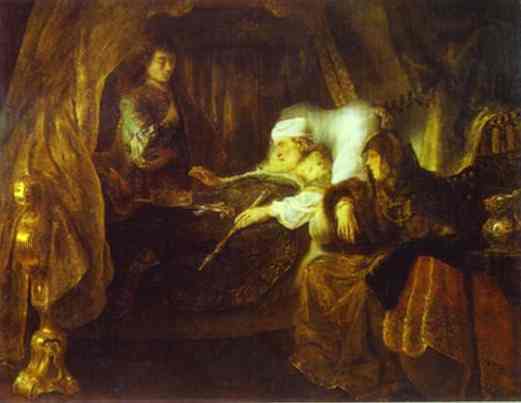David's Dying Charge to Solomon by Ferdinand Bol, 1 Chronicles 28, Bible.Gallery
Artwork Description

This large painting represents David, old and dying, in his bed. Holding his scepter in his left hand, it is the moment he names his son Solomon King of Israel. He did so in accordance with a promise he made to his lover Bathsheba, who watches the two men from the side. Both David and Solomon were renowned for their wisdom and seen as Old Testament prototypes of Christ, despite the illicit union that had brought about Solomon’s birth.
Born in Dordrecht, Bol moved to Amsterdam in 1637, where he trained with Rembrandt. Having set up his own studio in the early 1640s, Bol continued to work in the style of his teacher, as confirmed by David’s Dying Charge to Solomon. He based the composition of the painting, and its large bed, on Rembrandt’s famous Danae, now in the Hermitage, St Petersburg. Bol’s painting was the first Dutch work of art acquired by the National Gallery of Ireland, having been deposited by the Lord Lieutenant with the Irish Institution, which had been established in 1853 to raise funds and donations of pictures for a future National Gallery.
This painting represents the moment when David, old and dying, names his son Solomon King of Israel in accordance with a promise he made to his lover Bathsheba, who watches the two men from the side. Bol trained with Rembrandt in Amsterdam during the late 1630s-early 1640s and continued to work in the style of his teacher for several years. He based the composition of this painting on Rembrandt’s famous Danaë, now in the Hermitage, Saint Petersburg. Bol’s painting was the first Dutch work of art acquired by the National Gallery of Ireland.